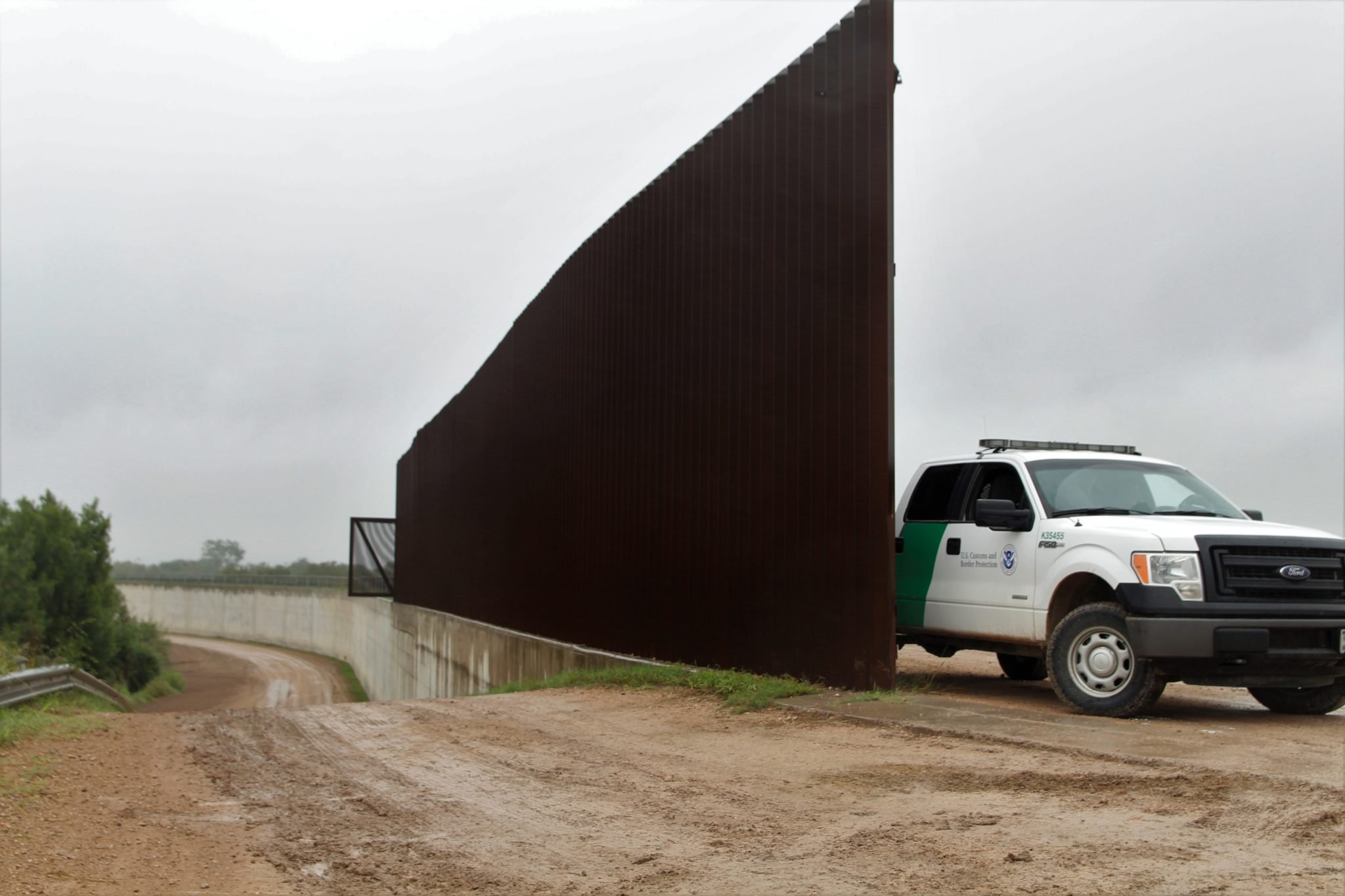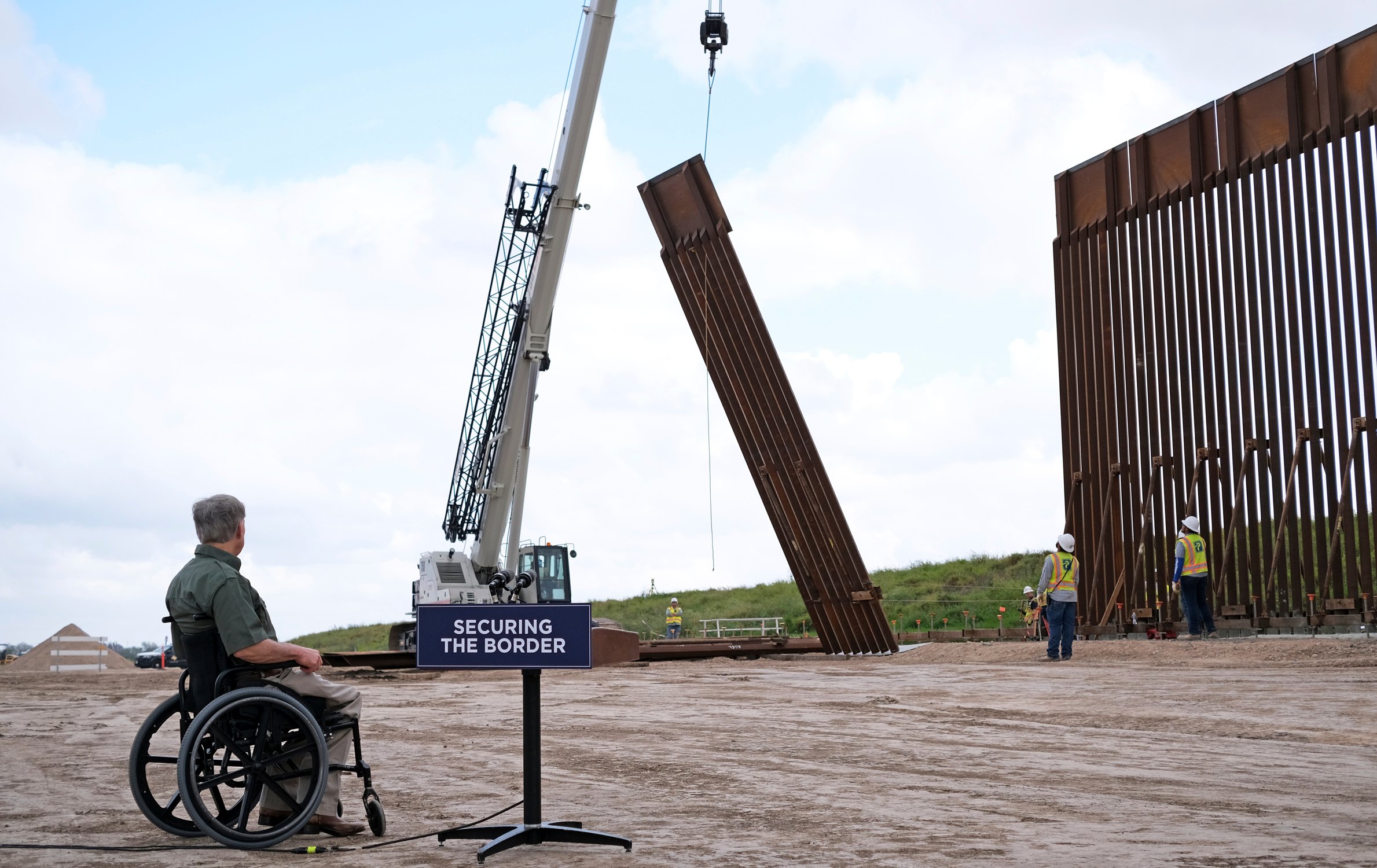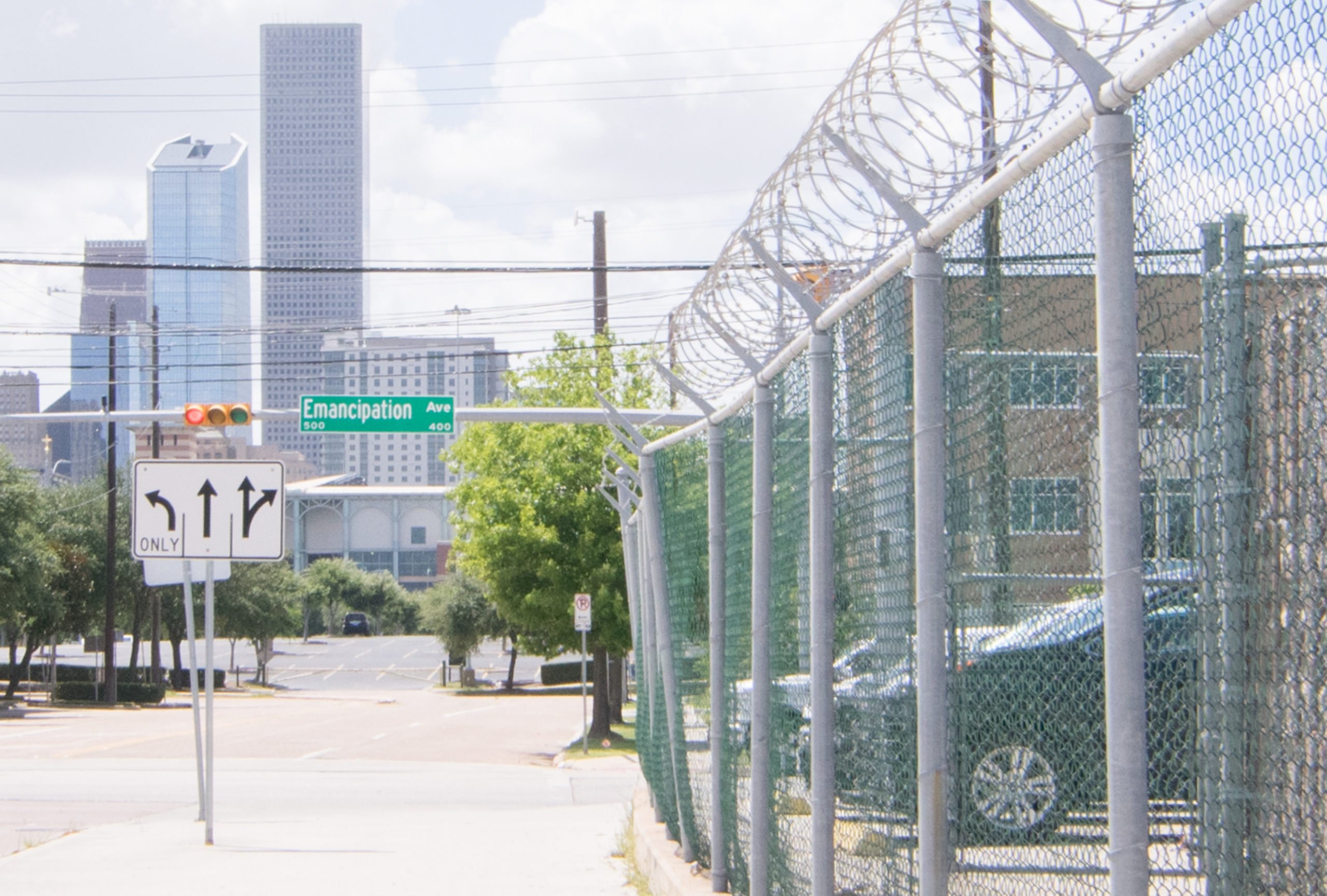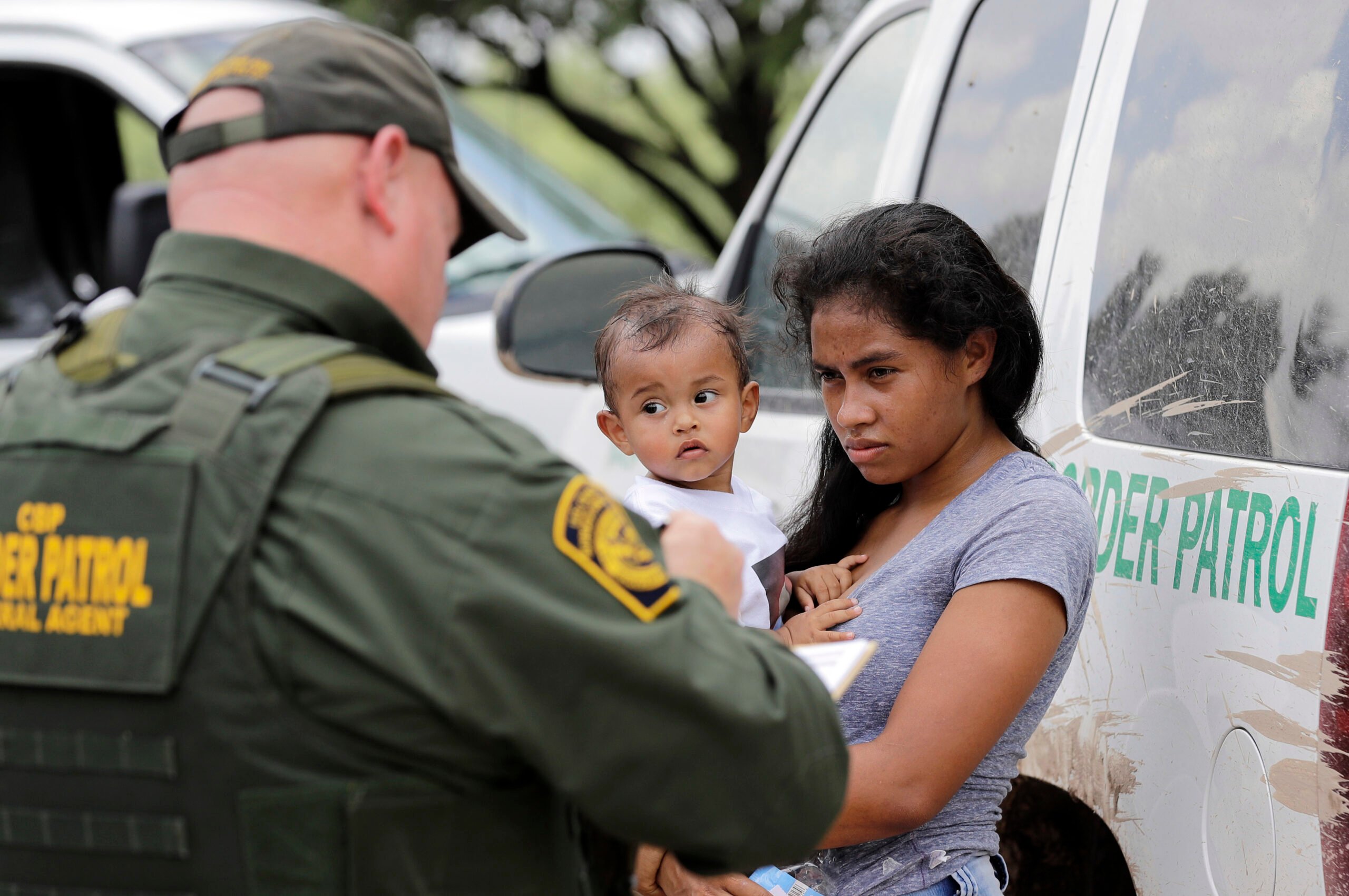For going on three years, Texas Governor Greg Abbott has relentlessly escalated a border battle against migrants and refugees under the banner of Operation Lone Star. Both a reactionary opportunist and a savvy lawyer, Texas’ top executive has used his enterprise to test the boundaries between state and federal authority and to try to free Texas from strictures imposed by the U.S. Supreme Court. Abbott has distorted the state’s criminal trespass statute to target unauthorized migrants; he’s declared an “invasion” of Texas by Mexican cartels; he’s sent asylum-seekers by the busload to other American states; he’s empowered the Texas National Guard and state troopers to apprehend immigrants and return them to the U.S.-Mexico border; he’s built a wall; and he’s deployed dangerous river buoys in the Rio Grande.
Now, with Senate Bill 4, the Texas Legislature has gifted Abbott the most extreme weapon in his anti-Federalist arsenal yet—one that could reshape immigration enforcement nationwide.
SB 4, passed in November during a dysfunctional fourth special legislative session, grants unprecedented powers to local and state police, judges, and magistrates. For starters, the bill makes it a state misdemeanor crime for a non-U.S. citizen to improperly enter Texas from another country—say, by rafting across the Rio Grande from Mexico. To avoid prosecution, alleged crossers may agree to a judicial order to return to the country they came from; if prosecuted, they face up to six months in jail, after which they’ll be subject to an identical order anyway. Refusal to comply with these state deportation orders constitutes a separate felony offense.
The bill also makes it a crime to reenter or be “at any time found” in Texas after having previously been removed from the country under SB 4 or by the feds. The law’s language utterly ignores the fact that deportees can sometimes return legally to America. SB 4’s crimes can be enforced anywhere in the sprawling Lone Star State, where one in five residents is foreign-born, including months or years after a person arrives. Unlike other anti-immigrant laws in Texas and elsewhere, SB 4 does not prohibit racial profiling in enforcement. It also does not exempt people seeking asylum.
In response to the bill, Mexico’s Foreign Ministry announced its concern for the “human rights” of the more than 10 million Mexicans living in Texas. Posing a major logistical hurdle for SB 4’s removal scheme, the agency also said that “Mexico categorically rejects any measure that allows state or local authorities to detain and return Mexican or foreign nationals to Mexican territory.”
What the Texas Legislature has passed is unprecedented in that it is a complete override of the federal government’s authority in immigration.
The U.S. federal government already maintains its own laws against illegal entry and reentry—statutes of racist origin that it enforces with discretion—but a state doing so would be an earthquake for the legal status quo, as would Texas effectively implementing its own deportation system.
“What the Texas Legislature has passed is unprecedented in that it is a complete override of the federal government’s authority in immigration,” said Adriana Piñon, legal director of the ACLU of Texas, which has already announced it will sue the state over the law. “SB 4 is brazenly unconstitutional and flouts … well-established precedent.”
The U.S. Supreme Court has affirmed the feds’ peremptory power over immigration since at least 1876, when it struck down a California law that had allowed state officials to deny entry to Chinese women deemed “lewd and debauched.” Under the California statute, the court memorably warned that “a silly, an obstinate, or a wicked [state official] may bring disgrace upon the whole country”—something the state had no right to do. Subsequent rulings, including one striking down a Pennsylvania law requiring noncitizens to register with the state, would reaffirm this federal power based on both foreign relations concerns and the Constitution’s specific prescription that Congress may “establish an uniform Rule of Naturalization.”
Over time, the courts clarified that states could, barring any conflict with federal laws, choose to make life harder for undocumented immigrants in limited ways such as denying state benefits or driver’s licenses. But they had to stay away from decisions about entry, removal, or remaining in the country. “That’s the only thing that’s practicable when you think about it,” said National Immigration Law Center Legal Director Lisa Graybill, “when you think about, ‘What would the system look like if there were 50 different states with 50 different immigration laws?’”
But around 2010, nativism was brewing in parts of the country. Prior to the Great Recession, America had seen high levels of unauthorized immigration for years; now the “Tea Party” revolt was in full swing. A Kansas attorney named Kris Kobach was helping cook up new policies around the country on the theory that state and local officials had “inherent” authority to enforce immigration law. In the border state of Arizona, where Maricopa County Sheriff Joe Arpaio was essentially running a mass racial profiling operation to harass immigrants, a now-infamous piece of legislation called Senate Bill 1070 emerged.
What would the system look like if there were 50 different states with 50 different immigration laws?
In a prefatory section, SB 1070 declared its intent to drive out unauthorized immigrants by “attrition through enforcement.” The bill made it a state crime for undocumented immigrants to seek employment or fail to carry federal registration documents; it also required police, in some cases, to determine immigration status during routine stops and empowered officers to arrest certain immigrants they believed to be deportable. SB 1070 sparked both terror and outrage, and Mexico issued a travel warning for the Grand Canyon State. In a dramatic move, the U.S. Justice Department sued to halt the bill, setting up the Supreme Court’s most recent major edict on immigration jurisdiction in a case styled Arizona v. United States.
In 1787, the Founding Father and abolitionist John Jay penned an argument in the third Federalist Paper about a special risk posed to national security by those states that bordered then-Spanish and British territories. “The bordering States, if any, will be those who, under the impulse of sudden irritation, and a quick sense of apparent interest or injury, will be most likely, by direct violence, to excite war with these nations,” Jay wrote, concluding that the “wisdom and prudence” of a strong national government would mitigate this danger.
Of course, much has changed since the 18th century. The United States is surrounded by neither British nor Spanish colonies, and as the global superpower, it faces little risk of war with any nearby nation. But Jay’s point—that international affairs need be left to the federal government and that border states, in particular, may tend to bluster shortsightedly into matters beyond their ken—remains cogent. It’s an insight that was ratified in the Constitution and later embraced by the courts, which have confined to the central government not just the prerogative to make treaties or declare war but the inextricably related power to control immigration. It’s an insight that almost seems conceived with Abbott in mind.
In 2012, a 5-3 Supreme Court majority (Justice Elena Kagan, who likely would have made it 6-3, recused herself) struck down or narrowed the bulk of Arizona’s SB 1070. The legal reasoning varied somewhat with each section of the state law, but the overall thrust was clear. “The Government of the United States has broad, undoubted power over the subject of immigration and the status of aliens,” wrote Justice Anthony Kennedy in the court’s opinion, in which he cited John Jay’s Federalist paper. “Arizona may have understandable frustrations with the problems caused by illegal immigration … but the State may not pursue policies that undermine federal law.”
Reactions to the Supreme Court’s ruling were initially mixed because the court didn’t annul SB 1070 in its entirety, but the decision ultimately proved a major win for the pro-immigrant side. “The Arizona case was an emphatic restatement of this core authority … the near-exclusive federal power over immigration,” said Peter Spiro, professor of international law at Temple University.
Other states including Alabama and Georgia had passed copycat legislation following Arizona’s lead. These were largely shredded in the lower courts after the 2012 decision, nipping Kobach’s legal strategy in the bud, and one Arizona provision that narrowly survived the Supreme Court ruling was later circumscribed per a separate settlement agreement.
Operating under this legal status quo, Republican leaders like Texas’ governor busied themselves with more indirect measures like fear-mongering about Syrian refugees, banning “sanctuary cities,” and flooding the border with cops and soldiers to assist Border Patrol. But as even President Trump’s cruelty failed to stem a global refugee crisis and the state GOP’s moderate wing deteriorated, and as the Supreme Court lurched rightward and a vulnerable Democrat entered the White House, knives were sharpened.
Last May, during a stop in Houston, Abbott criticized both the Arizona precedent and a landmark 1982 ruling that required states to fund public education for undocumented children. “One or both of those two decisions are going to have to go,” the governor said. “Either the Arizona decision will have to go, giving states full authority to enforce U.S. immigration law, or [Plyler v. Doe] will have to go,” meaning the feds would start footing the bill for educating kids without legal status.

In March, Texas Attorney General Ken Paxton, who has fought virtually every attempt by President Joe Biden to liberalize immigration policy, told a state Senate committee that he hoped for legislation that would challenge the Arizona holding. “I have been saying this for two years that we ought to do what we can to try to overturn that decision,” the state’s embattled top attorney said. “We’ve got a different court; we’ve got the best chance we’ve ever had to overturn that and give the states the ability to protect their citizens.”
In this fall’s third and fourth special legislative sessions, Abbott specifically called for bills criminalizing illegal entry and authorizing state deportations.
State Representative David Spiller—a Republican from Jacksboro, some six hours by car from the border, who carried versions of SB 4 in the House in both sessions—told the Observer that drafting the bill was “a group effort” with help from both the governor and attorney general’s offices. Spiller claimed the bill was actually not a bid to overturn Arizona: “It’s not in conflict with federal law,” he said. “It stayed away from the areas that Arizona and SB 1070 … got into.”
Spiller is correct that his bill is different from Arizona’s, but experts say that SB 4, if anything, conflicts more directly with the top court’s holdings. “It goes into the core of immigration regulation, which well before the Arizona case, the Supreme Court indicated you can’t do,” said Thomas Saenz, president and general counsel of the Mexican American Legal Defense and Educational Fund. “If we didn’t have one immigration system, we wouldn’t be one country, and that’s what Texas has done because it’s seeking to basically run its own deportation court.”
Because of the surplus of legal precedent, Saenz is among those who think that even today’s much more conservative U.S. Supreme Court would vacate SB 4. “I think the only two who may be just crazy enough to go the other way are obviously [Justice] Clarence Thomas and [Justice Samuel] Alito,” he said, both judges having been on the court and dissented from the 2012 ruling.
There’s just a lot more of these kinds of frontal challenges to well-established norms, and those norms seem to be falling by the wayside in lots of other contexts.
Of three conservative dissents, the most extensive and radical in the Arizona case came from now-deceased Justice Antonin Scalia, who wrote that the majority holding “deprives States of what most would consider the defining characteristic of sovereignty: the power to exclude from the sovereign’s territory people who have no right to be there,” grounding his argument in the historical claim that states during the Republic’s first century restricted immigration of “convicted criminals, indigents, persons with contagious diseases, and (in Southern States) freed blacks.”
Some observers see Scalia’s opinion as something of a dead letter, rather than a dissent likely to be revived. “I think it was viewed as extreme then, and it’s still extreme,” said Kevin Johnson, professor of law and Chicana/o Studies at UC-Davis, who agreed with Saenz that even today’s Supreme Court would reaffirm its long-standing immigration jurisprudence.
But, in the wake of nation-shaking decisions such as the end of Roe, not all experts are so sure. “There’s just a lot more of these kinds of frontal challenges to well-established norms, and those norms seem to be falling by the wayside in lots of other contexts,” said Spiro, the Temple professor, adding that the argumentative material for such a reversal could come from the unique impact of immigration on states like Texas.
“If there’s anything left to the norm against state action in immigration, [the court] will dispatch with this law. But it will test it—and I’m not sure the norm stands.”
Correction: An earlier version of this story used a photo of European border police, rather than their American counterparts. We regret the error.




